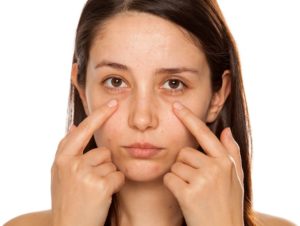
Did you know that over 22 percent of the US population and half of the buildings encounter black mold challenges? Allowing mold to grow in your basement or outdoors may lead to the development of mold-related illnesses. Although toxic mold poisoning symptoms are vague, muscle aches, memory challenges, fatigues, and gut issues, are common signs that you should never ignore.
In this article, you’ll learn how mold poisoning occurs, the symptoms, and how to treat it.
What Is Toxic Mold Poisoning?
Mold spores are excellent harbors of microbial volatile organic compounds and mycotoxins. When molds are allowed to thrive, they predispose you to the dangers of breathing in the toxins, swallowing, or even touching them. Once ingested, they form colonies in your body and start producing the poisonous mycotoxins.
Unlike mold allergies which cause itchy eyes, running and itchy skin, mold toxins trigger widespread symptoms in the human body. When you allow mold to grow indoors, it starts producing these toxins that have adverse health effects on your body.
Symptoms of Mold Poisoning
Considering that mold toxins react differently to people, there are no clear signs that can indicate you’re suffering from mold illness. However, when you start experiencing irritable bowel syndrome, chronic fatigue, or a sudden downturn in your health, you may need to see a doctor.
According to a National Medicine Library publication, individuals who work in damp buildings are more predisposed to brain inflammation. Brain scans done on individuals with mold illnesses further established that they could be in danger of nervous system dysfunction and structural brain change.
The following are signs you could be suffering from mold-induced toxins:
- Memory loss, low concentration levels, and brain fog
- Nausea, vomiting, food sensitivity, metallic mouth taste, and vomiting
- Thyroid dysfunction and continuous fatigue
- Mood swings, anxiety, and depression
- Blurred vision, itchy eyes, and eye irritation
- Sore throat, sneezing, and other respiratory system challenges
- Tremors, dizziness, and nervous system problems
How to Treat Toxic Mold Poisoning
Clearing molds out of your system is possible. However, you must be ready to support its natural drainage and detoxification systems. Although there are different treatment options, supplements have also proved effective in cleansing molds from the body. Effective treatment methods include:
Bind Mold Toxins
Once a doctor diagnoses you with mold illnesses, they’ll want to clear out the mycotoxins. Physicians may use cholestyramine or sequestering agents to bind the mycotoxins in your gut system. Regardless of the drug used, it will bind the toxins until safely excreted from the body.
Boost Energy and Oxygen in the Body
When mycotoxins get into the body, the first thing they destroy is the mitochondria. This leads to low oxygen levels and less cellular energy. It is therefore prudent to use drugs or supplements that will boost oxygen supply for efficient energy generation.
Enhance Drainage
The liver is essential in the removal of mycotoxins from the blood into the bile. Once it’s efficiently cleared from the blood system, it is excreted through stool. For this to happen, it’s imperative to detox your body by moving your bowel at least twice a day. As such, toxins may not be reabsorbed back into the body.






